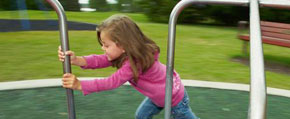We are pleased to announce an exciting new alliance between Active Living Research and GP RED to co-host and coordinate...
Moderating Effect of the Environment on Adolescent Physical Activity Change
Presentation at the 2005 Active Living Research Annual Conference
Background
The prevalence of childhood and adolescent obesity is increasing in the U.S. It has been suggested that changes in the environment, particularly the reduction in the ability to walk or cycle in the neighborhoods in which children live has contributed to this increase.
Specific Aims
The aims of this study are 1) to assess whether and which aspects of adolescents boys' physical environment are related to their habitual physical activity levels, 2) to assess whether aspects of the environment moderate the success of a self-efficacy and goal setting Boy scout physical activity promotion intervention.
Methods
This study will build upon data that are already being collected as part of a study that is examining the effect of participation in physical activity and nutrition badge programs on the physical activity levels and dietary consumption of approximately 350 Boy Scouts from the greater Houston area. As part of the current study the participant's physical activity levels are being recorded for three days before and after the intervention using CSA activity monitors. Participants height, weight (for BMI), triceps skinfold, ethnicity and socioeconomic status are also being recorded. This proposed research would obtain information about the environments in which the participants live using a modified version of the neighborhood environment observers' checklist. Observers will use the checklist to provide a record of the environment within a 400m radius of each participant's home. The relationship between adolescent boys' physical activity levels and the environment in which they live will then be examined by relating baseline activity levels and neighborhood characteristics using correlation and spatial statistics. The post-intervention physical activity data will then also be related to the environmental data in which the participants live (while also controlling for baseline activity) to assess the moderating effect of the environment on the success of the physical activity intervention. The findings will guide future intervention studies by providing information on both the influence of environmental characteristics on adolescent's physical activity levels and the influence of environmental factors on the success of physical activity behavior change interventions.
- DOWNLOAD "Jago_0.pdf" PDF (0.64 MB) Presentations
Related Tools & Resources
STAY UP TO DATE
RECENTLY ADDED TOOLS & RESOURCES
MOVE! A BLOG ABOUT ACTIVE LIVING
The "Active Living Conference" aims to break down research and practice silos and...







